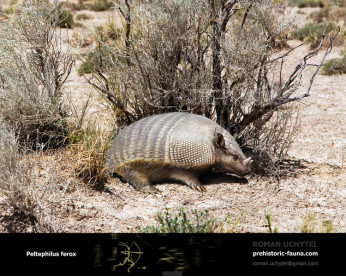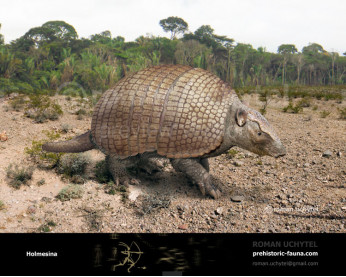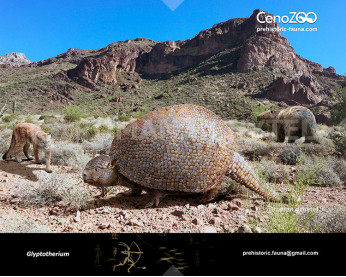Doedicurus clavicaudatus
376376Doedicurus (Doedicurus clavicaudatus Owen, 1847)
Order: Cingulata
Family: Chlamyphoridae
Subfamily: †Glyptodontinae
Temporal range: living during the Pleistocene until the end of the last glacial period, some 11,000 years ago (South America)
Dimensions: 4 m in length, 150 cm in height, 1910 - 2370 kg of weight.
A typical representative: Doedicurus clavicaudatus
Doedicurus clavicaudatus the largest known glyptodont, and one of the better-known members of the South American Pleistocene megafauna. D. clavicaudatus inhabited woodlands and grasslands and was herbivorous. With a height of 1.5 metres and an overall length of around 4 metres, it could reach a mass of approximately 1910 to 2370 kilograms. It had a huge domed carapace that was made of many tightly fitted scutes, somewhat similar to that of its modern-day relative, the armadillos. Its tail was surrounded by a flexible sheath of bone and had long spikes or knobs on the end, at least in male individuals. The carapace was firmly anchored to the pelvis but loose around the shoulder. Its front bore an additional smaller dome. This has been interpreted as a fat-filled space, similar to a camel's hump, which would have stored energy for the dry season and cushioned blows of the tail of rival animals. Fossils of D. clavicaudatus are found in South America, especially in the Luján Formation in Argentina. Other fossil remains have been found in the San José and Dolores Formations of Uruguay and in Santa Vitória do Palmar, Brazil. Given the late date of its disappearance, it was encountered and probably also hunted by the first human settlers of South America.
Doedicurus (Doedicurus clavicaudatus Owen, 1847)
Order: Cingulata
Family: Chlamyphoridae
Subfamily: †Glyptodontinae
Temporal range: living during the Pleistocene until the end of the last glacial period, some 11,000 years ago (South America)
Dimensions: 4 m in length, 150 cm in height, 1910 - 2370 kg of weight.
A typical representative: Doedicurus clavicaudatus
Doedicurus clavicaudatus the largest known glyptodont, and one of the better-known members of the South American Pleistocene megafauna. D. clavicaudatus inhabited woodlands and grasslands and was herbivorous. With a height of 1.5 metres and an overall length of around 4 metres, it could reach a mass of approximately 1910 to 2370 kilograms. It had a huge domed carapace that was made of many tightly fitted scutes, somewhat similar to that of its modern-day relative, the armadillos. Its tail was surrounded by a flexible sheath of bone and had long spikes or knobs on the end, at least in male individuals. The carapace was firmly anchored to the pelvis but loose around the shoulder. Its front bore an additional smaller dome. This has been interpreted as a fat-filled space, similar to a camel's hump, which would have stored energy for the dry season and cushioned blows of the tail of rival animals. Fossils of D. clavicaudatus are found in South America, especially in the Luján Formation in Argentina. Other fossil remains have been found in the San José and Dolores Formations of Uruguay and in Santa Vitória do Palmar, Brazil. Given the late date of its disappearance, it was encountered and probably also hunted by the first human settlers of South America.

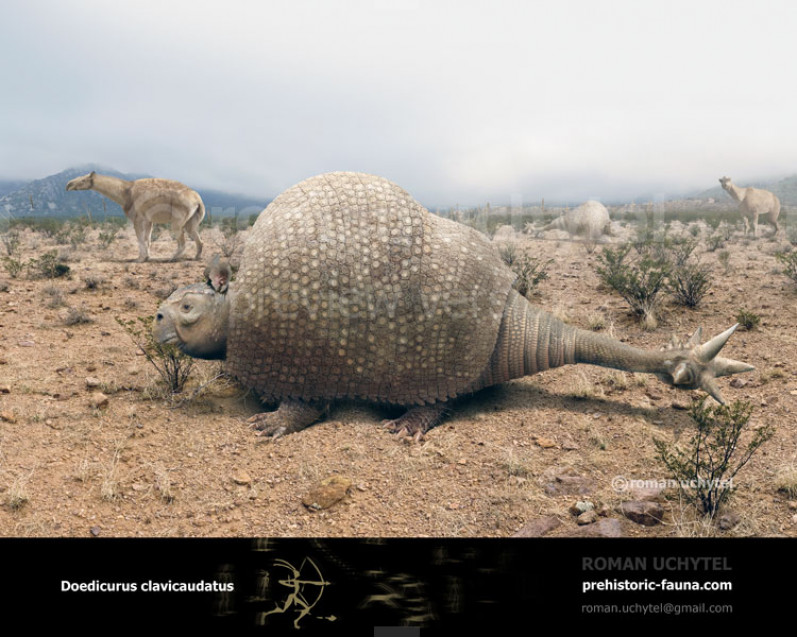
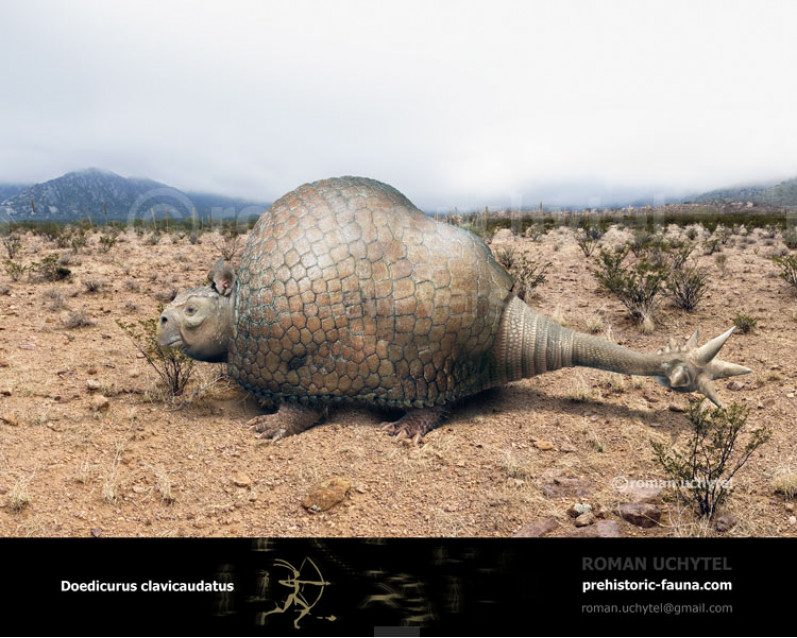
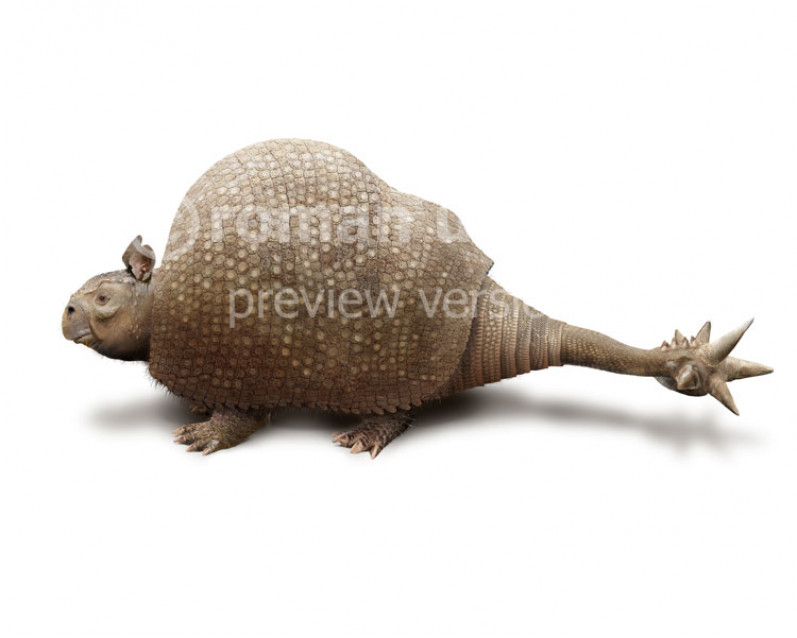
-797x638.jpg)
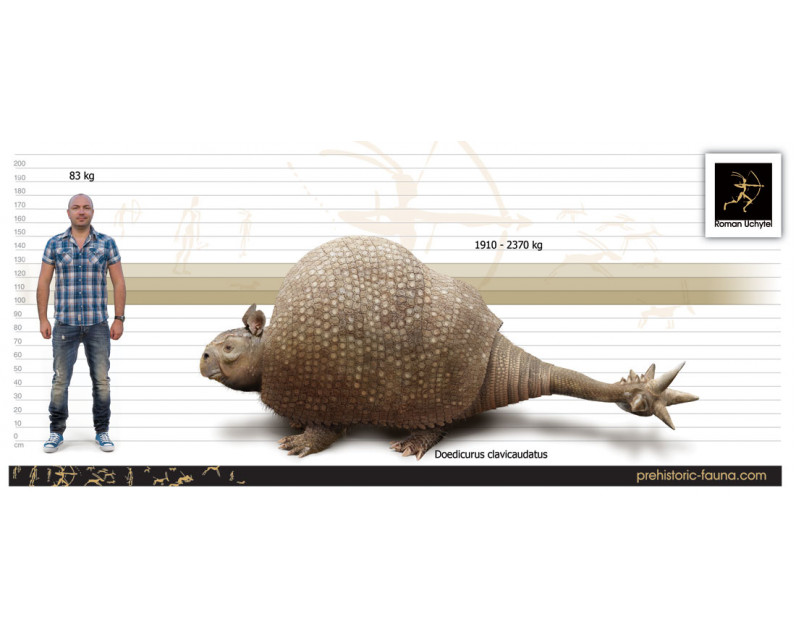



-70x56.jpg)

-346x277.jpg)
